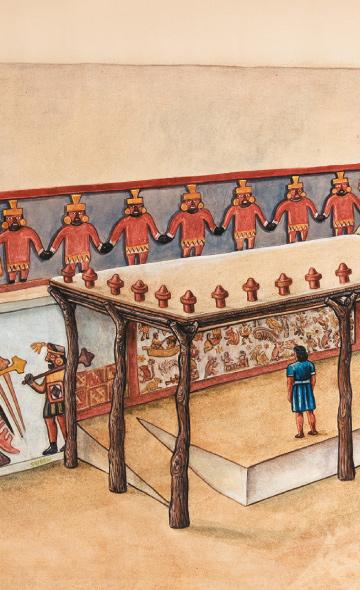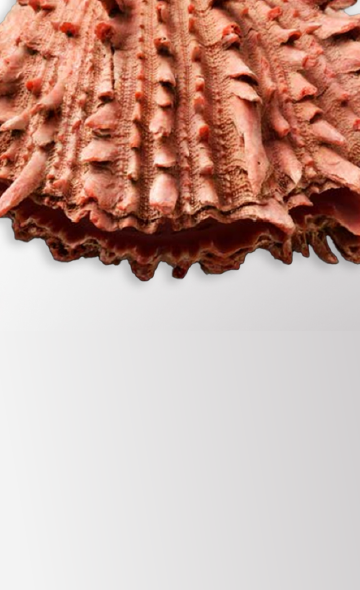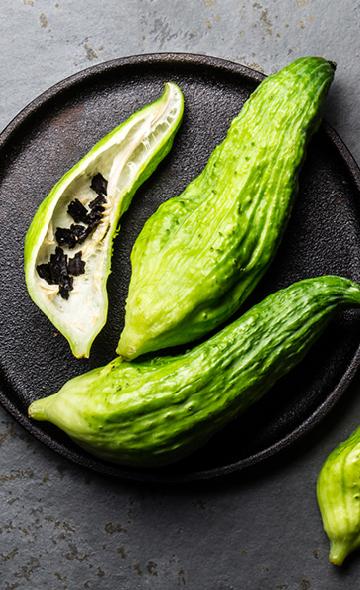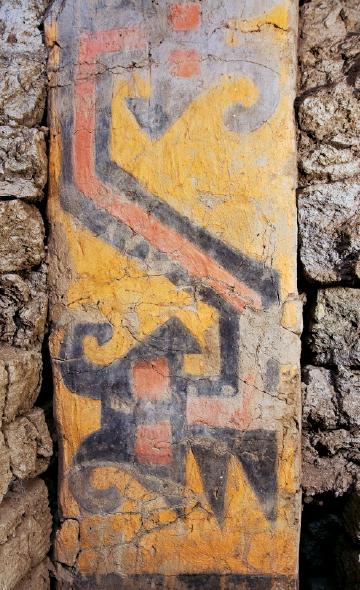- Visitors
- Researchers
- Students
- Community
- Information for the tourist
- Hours and fees
- How to get?
- Visitor Regulations
- Virtual tours
- Classic route
- Mystical route
- Specialized route
- Site museum
- Know the town
- Cultural Spaces
- Cao Museum
- Huaca Cao Viejo
- Huaca Prieta
- Huaca Cortada
- Ceremonial Well
- Walls
- Play at home
- Puzzle
- Trivia
- Memorize
- Crosswords
- Alphabet soup
- Crafts
- Pac-Man Moche
- Workshops and Inventory
- Micro-workshops
- Collections inventory
- News
- Students
- The Moche: Everything you need to know about this pre-Hispanic culture
News
CategoriesSelect the category you want to see:
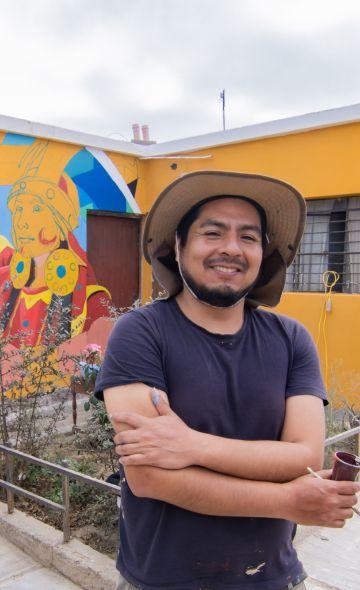
Magdalena de Cao to Once Again Host an International Mural Art Gathering ...
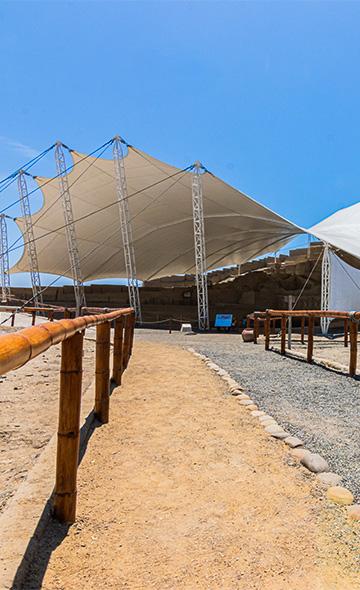
Explore El Brujo Through Virtual Tours: Culture and History at a Click ...
To receive new news.
By: Complejo Arqueológico El Brujo
The Moche were a civilization that developed in Peru in the midst of the Gallinazo society (Millaire et al. 2016). It is estimated that their genesis came about around the year 100 CE, a period during which it is said there was the rise of an elite class that inherited the ceremonial traditions of their ancestors and that settled in the valleys of the North Coast (Bawden 1994, pg. 398; Quilter 2010, pg. 235).
Occupation and decline of Moche culture

Image 1: High-relief mural at Huaca Cao Viejo that depicts officiants holding hands.
The intensification of archaeological studies about the Moche has revealed that their range was extensive (14 valleys on the Peruvian North Coast) and that their occupation of this territory was neither homogenous nor continuous (Giersz 2011).
Due to the variability identified in the ceramic styles of this population, as well as their different historical routes, researchers theorize the existence of two large Moche territories: the Northern Territory, from Alto Piura in the Jequetepeque Valley; and the Southern Territory, in the Chicama and Huarmey Valleys.
Regarding the disappearance of the Moche, it is known that between 600 and 650 CE the Moche experienced significant changes as a result of a climate crisis and Wari expansion. However, the declines of each of the towns that made up the Moche culture had different intensities and time-frames of occupation. With the Moche decline, new groups of power assumed control of the societies, including the Lambayeque in the North and the Chimú in the South.
The Moche elite

Image 2: The wood idol offered for the construction of the third building.
Excavations and research carried out at Moche settlements have revealed more about their elite. In chronological order, the oldest character is the “Warrior-Priest”, found at Huaca La Cruz in Virú. Following this is the Old Lord of Sipán, who would have lived between the 2nd and 6th centuries CE. This individual was discovered at Huaca Rajada and his funerary goods indicated that he occupied the same rank as the Warrior-Priest, but in a different time period.
According to the chronology, the next elite funerary context was the Lady of Cao, although her discovery was the most recent. Her finding marked a turning point in Peruvian archaeology, since it revealed that women also held roles of power in pre-Hispanic cultures. Additionally, the Lord of Sipán was found at Huaca Rajada, and it is thought that he lived between the 7th and 8th centuries CE.
El Brujo, an example of strategic Moche constructions

Image 3: Huaca Cao Viejo
The El Brujo Archaeological Complex is a clear example of the strategic constructions made by the Moche. This space was occupied by this society between the years 200 and 800 CE, during which time a series of buildings was constructed over irregular and elevated surfaces. This is evident if we observe constructions such as Huaca Prieta, Huaca Cortada, and Huaca Cao Viejo. The objective of this placement was to make the structures safe from flooding and landslides (Bazán 2020, personal communication).
Marks on the Moche adobes
A feature that characterizes Moche constructions is that they were conceived of as spaces of continual rebuilding. This is why we see different phases of construction which involve the burial of the previous building to construct a new one. During the last constructive phases at Huaca Cao, the old building was sealed with a constructive technique called “blocks of hatched adobes”, which were composed of adobe blocks that had a mark on their surface, identified as a “community mark” or “maker’s mark”.
This shows the level of technical and architectural development, as well as the level of organization, of the Moche. The marks identified on the pieces could be due to two reasons, which are not mutually exclusive. The first motive was to know who were the ones making the adobes; the second was to ensure that a single structure used adobes from the same manufacturer, which was important since there wasn’t standardization during this time period.
Huaca Cao is one of the Moche architectural sites at which these makers’ marks can be observed. Despite this, it has been noted that not all of these blocks were built by the same maker. This leads to the inference that groups of families or various communities shared in the labor to achieve the construction of the pyramid.
An interesting fact about the constructions during the last phases of Moche civilization is that they saw the use of different adobes with marks, so there is no regularity in the blocks. This could reflect changes in society leading to a transformation in the way in which labor was organized.
Economic activities practiced by the Moche
In terms of Moche economic activities, it is important to note that the environment around settlements such as El Brujo allowed for the practice of diverse basic economic activities, such as fishing, gathering, hunting, agriculture, and harvesting, as well as the exchange of goods such as metals, ceramics, and textiles.
With respect to fishing, the nearness of beaches such as those known today as Bocana and El Brujo enabled the population that settled here to obtain marine resources for consumption, such as mollusks, crustaceans, fish, birds, sea mammals, and others. Fishing was also practiced in the swampy areas, where species such as life, present in Moche iconography, and lisa were obtained.
On the other hand, in the case of agriculture, the area of the valley was exploited, away from the sea, for the consumption of cereals, legumes, and produce. Studies carried out at the archaeological sites have revealed that, in the urban areas of Huaca Cao Viejo (Chicama Valley) and Huaca de la Luna (Moche Valley), people cultivated and consumed corn, chirimoya, guanábana, plum, mamey, chili pepper, squash, gourd, lúcuma, guayaba, peanut, pacae, jack bean, lima bean, red bean, algarrobo, potato, sweet potato, manioc, and achira.
The valley region was also important for hunting, since the variety of flora in this area attracted the presence of different species of animals.
Research into the Moche legacy are still being carried out and revealing new information about its culture, history, customs, and cosmovision. Currently, the archaeological remains found can be viewed at the Site Museum at each of the Moche archaeological complexes. Visit the El Brujo Archaeological Complex and learn more about the Moche legacy!
Students , outstanding news


